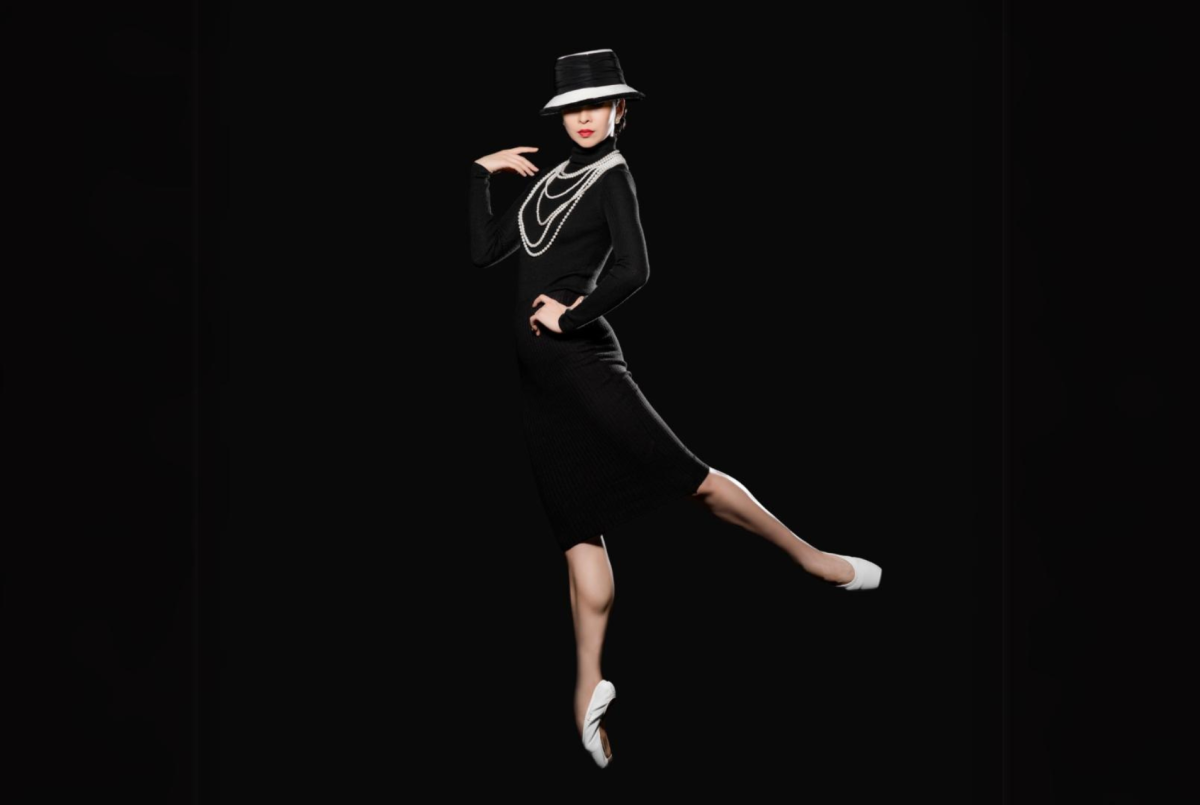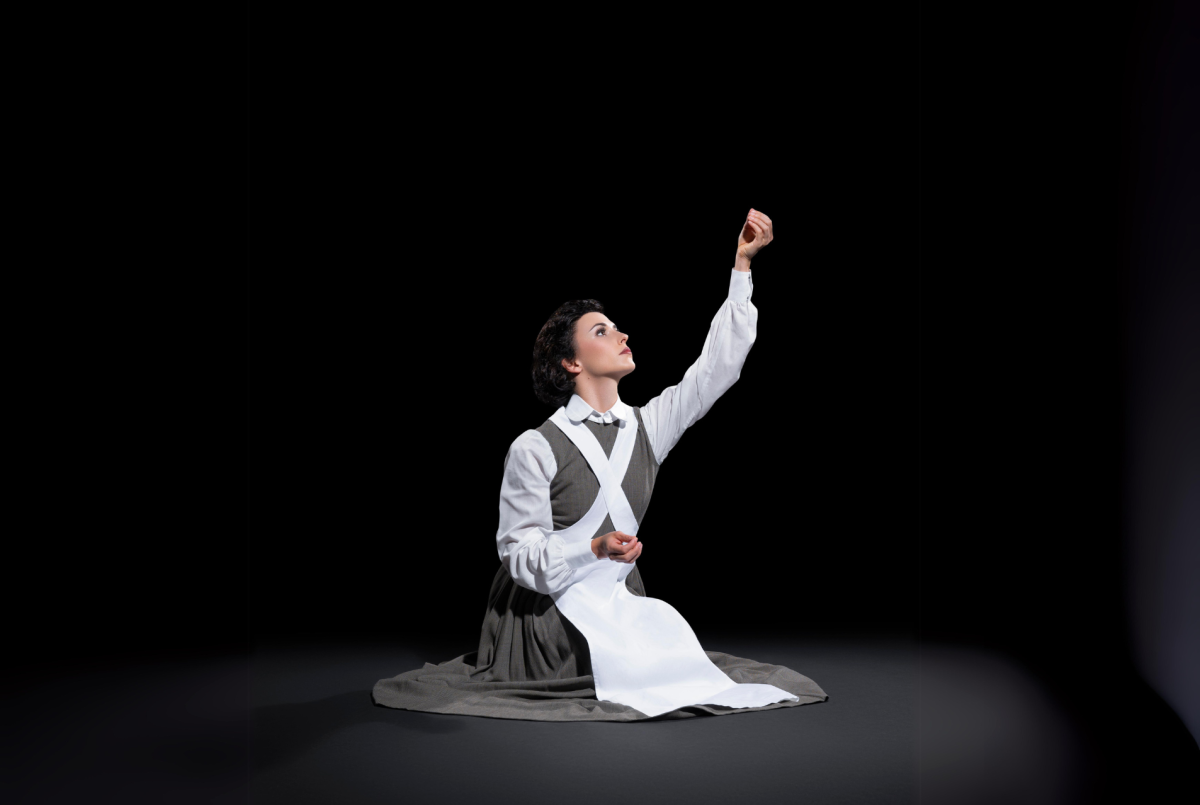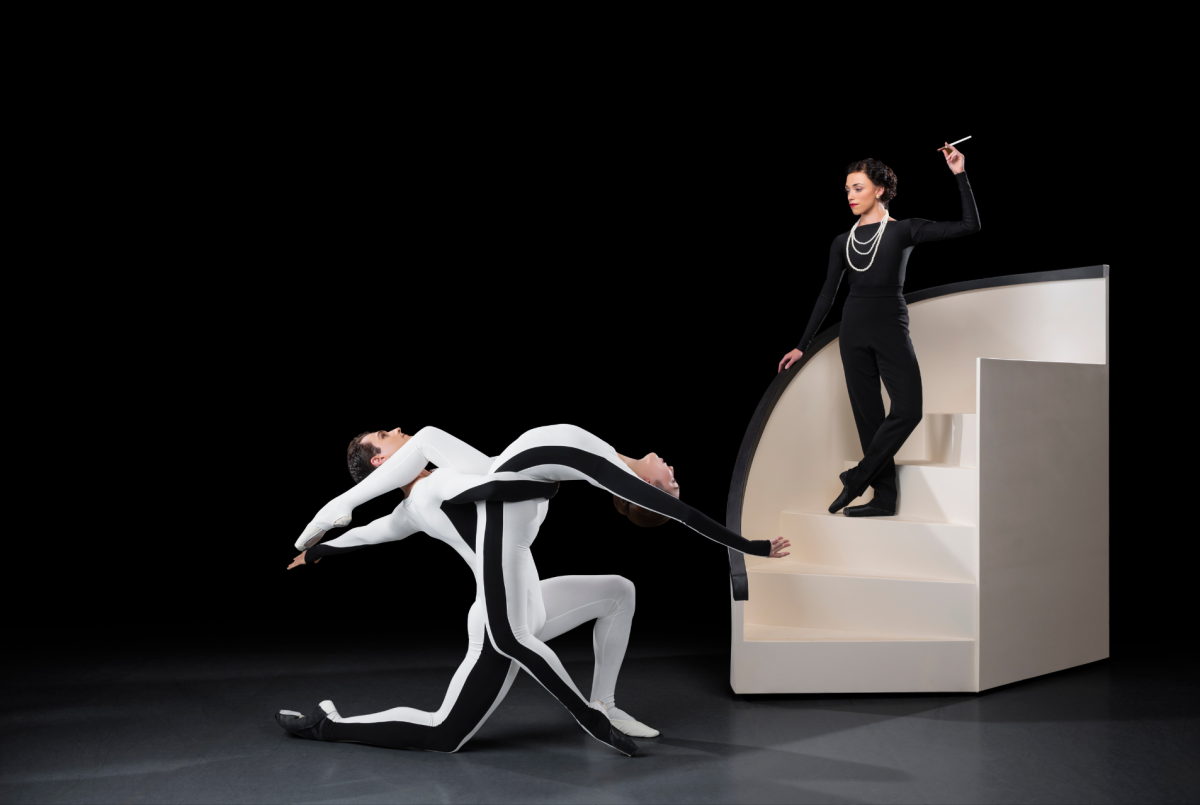
Coco Chanel: The Life of a Fashion Icon
Acclaimed choreographer Annabelle Lopez Ochoa’s original full-length narrative ballet Coco Chanel: The Life of a Fashion Icon is coming to the Atlanta Ballet stage for its much anticipated North American premiere. The work chronicles Chanel’s almost mythical rags-to-riches and often controversial story. The woman who launched a global fashion empire, Coco Chanel redefined the world of fashion, and more than a century later her legacy continues. That legacy is defined in part by Chanel’s brilliant designs, shrewd business acumen, and glamorous lifestyle; it is also defined by immorality and opportunism in her rise to the top.
En Face Magazine is thrilled to present an exclusive interview with Angela Agresti, Atlanta Ballet Company Repetiteur, who has worked closely with Annabelle Lopez Ochoa from the ballet’s premiere by co-producer Hong Kong Ballet in March of 2023, to its introduction to Atlanta Ballet audiences in February 2024. This experience as the production’s stager has equipped Agresti with an intimate understanding of the ballet’s creation, offering a unique perspective on the challenges and triumphs of bringing Chanel’s story to life.

Annabelle Lopez Ochoa
Choreographer of
Coco Chanel: The Life of a Fashion Icon

Angela Agresti
Atlanta Ballet
Company Repetiteur
Alanna: As a choreographer, Annabelle Lopez Ochoa is drawn towards telling the tales of complicated women, the ones who defy definitions and refuse to be placed in boxes. She has created narrative ballets for women such as “Evita” Perón, Frieda Kahlo, and now Coco Chanel. Can you share a brief overview of Chanel’s story, and why Ochoa felt it belonged on the ballet stage?
Angela: Annabelle’s ballet follows the life of Gabriele ‘Coco’ Chanel which is a rags-to-riches story; a self-made woman in a time where changing one’s socio-economic status was not easily done, especially if it didn’t come through marriage. Chanel became mainstream for her fashion designs and her legacy remains today through the House of Chanel. She revolutionized how women dressed in the early 1900’s, which continues to influence fashion to this day. Annabelle took interest in how she did this: from where it all began, to who helped along the way.
Alanna: What style of movements and motifs made their way into the vocabulary of this piece and how do they represent Chanel?
Angela: In telling this narrative ballet, Annabelle uses many motifs to ground the viewer, and Coco herself. Musically there are themes that come back to do the same. The major motifs in movement are between Coco Chanel and her one true love, Arthur “Boy” Capel, as well as with the Shadow Chanel. The motifs of movement between Capel and Chanel are reminiscent of the Chanel logo of interlocking C’s – the infamous symbol that is later portrayed in an abstract duet.
The Shadow Chanel character in the ballet is the already-realized fashion icon that we know, looking back on her previous self. She acts as a guide for Coco throughout the ballet; walking with her every step of the story until her past self reaches her destiny. The movements between the Shadow Chanel and Coco Chanel are interconnected as well, mainly with the Shadow pointing to the heart of Coco and allowing us to see reactions of vulnerability and truth.

Alanna: You were there as the work was premiered by Hong Kong Ballet in 2023. Can you tell us about the experience of seeing the ballet take its final shape?
Angela: Coco Chanel is a large-scale production with lots of puzzle pieces to connect for it to run smoothly. Watching the process in Hong Kong was thrilling! I experienced the creation process in rehearsals, the choreography of moving set pieces and props, the multitude of costumes come to life, and the original score take final shape- within a span of 3 weeks! It is clear Annabelle is a skilled and experienced creator and has a team that emphasizes just the right notes she wants to hit. All pieces of this production locked into place beautifully to develop into a well-constructed and stunning production.
Alanna: Your role at Atlanta Ballet is that of Company Repetiteur, and you will be working with Annabelle Lopez Ochoa to restage Coco Chanel on Atlanta Ballet. Can you tell us what being a repetiteur entails and what it looks like to stage a ballet?
Angela: As a company repetiteur, my responsibilities are to coach the dancers in their roles and to keep track of all choreography, musicality, and how they move around in space. Depending on the project- whether it’s a new creation or if it’s an existing piece of choreography- I can also be in charge of teaching the choreography, or “staging”. For existing pieces, and in this case, Coco, I am a stager; I have been in charge of knowing every step and action that occurs in this ballet. Staging this ballet required me to analyze Annabelle’s style and intention in telling the story. For this process, I organized her creation meticulously through notation of choreography, musicality, spacing, and even wrote down quotations of things she said coaching the dancers of Hong Kong Ballet to pass along intentions. Because Annabelle’s ability to nail down specific qualities of her characters is so strong, one of my biggest joys is to get the movement in my own body to later teach it.

Alanna: The ballet is divided into a white act and a black act – what is the inspiration behind this choice and how is it portrayed on stage?
Angela: The first act is the white act, which is the beginning of Chanel’s story. The world begins to open up to Chanel through connections made, her experiments with fashion, the creation of her perfume, and falling in love. The end of this act is marked with the death of this love and when the second act begins, it is in darkness. She is grieving her loss, WWII is present, and she is momentarily less active in her fashion career.
Alanna: The stage design of Coco Chanel is truly breathtaking! Can you share some of the highlights that audience members can look forward to and how they tie in with Chanel’s story?
Angela: The stage design is beautiful and reminiscent of the perfume bottle of Chanel no.5. The original perfume bottle for the scent was seen by the costume/set designer, Jérôme Kaplan, at a museum in Paris- a timeless, minimalist design in which he became inspired. Annabelle is a master at transforming a scene with sets and props used choreographically and in various ways. There are staircases reminiscent of the Rue Cambon Boutique in Paris that act as a way to show various people coming and going in her life. They also show opulence and give each scene a new purpose and setting. Another notable transformative prop is the use of chairs. We have 12 dancers in the beginning of the ballet- some of them women in long gowns- standing on chairs that are lit from below as Chanel sews as a seamstress. These chairs eventually float to the ceiling to become chandeliers in Balsan’s manor.

Alanna: We cannot overestimate the value of costume design in a Chanel-inspired ballet! What was the design process like and what iconic pieces can we expect to see referenced?
Angela: Though I cannot speak to what the design process was like, I know the history and emulation of Chanel’s fashion in the storytelling was very important. We will see hats similar to what she first made, sailor-inspired fashion in Deauville, businesswoman suits, and the little black dress accompanied by many of her famous runway looks. And of course, pearls!
Alanna: What is one of your favorite moments of the ballet and why?
Angela: Every time I’m asked what my favorite scene is, I have such a difficult time nailing one down! I have two…at least at this moment. One being the introduction of her fashion empire with 12 seamstresses dancing like a machine with sewing tables. It is a treat to watch! The other is a scene meeting Stravinsky during his time composing music for the Ballet Russes (The Rite of Spring). He starts by banging away at the piano- hard at work, making his masterpiece (yes we have a piano on stage) and the choreography is brilliantly made to show that process. Chanel’s duet when she meets Stravinsky is also different in style to the rest of the ballet. It includes an ensemble of dancers dressed like the Ballet Russes which ties our ballet world into the history of her fashion!
Alanna: What else would you like our readers to know about the production?
Angela: Something to note is that the Coco Chanel character is in every single scene of this ballet. If she is not on stage she is changing her costume. She is also dancing with 4 different partners in one production which is rare in the classical form of full-length ballets. It is a true experience for the dancer and it has been a wonderful opportunity of growth for those cast as Chanel. Beyond the technical side, this show is such a treat for the eye. The costumes, sets, and choreography document and evoke the time period, location, and feelings throughout Chanel’s journey, at such a palatable pace. Peter Salem skillfully embodies these aspects of the ballet with his score. We are so happy that Atlanta Ballet has the opportunity to premiere this ballet for North American audiences.
Experience the almost mythical rags-to-riches story yourself with Atlanta Ballet February 9 – 17.
Note: This production was inspired by real-life persons and events, but some incidents, names, characters and timelines portrayed in this production are fictitious. Reference to any specific product, service, design, or otherwise does not necessarily constitute or imply its endorsement, sponsorship or association by any person with Atlanta Ballet.


Follow Us
Subscribe For Updates & Giveaways!
Stay up to date with exciting original content, upcoming performances, and giveaways unique to your community and beyond!
